Physical Address
304 North Cardinal St.
Dorchester Center, MA 02124
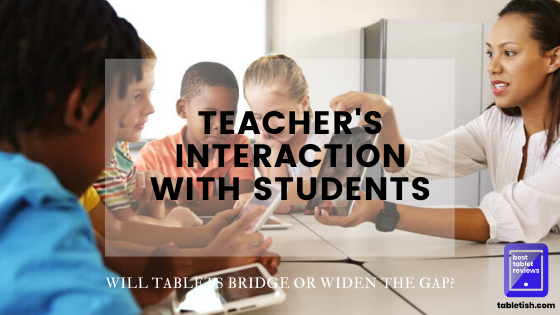

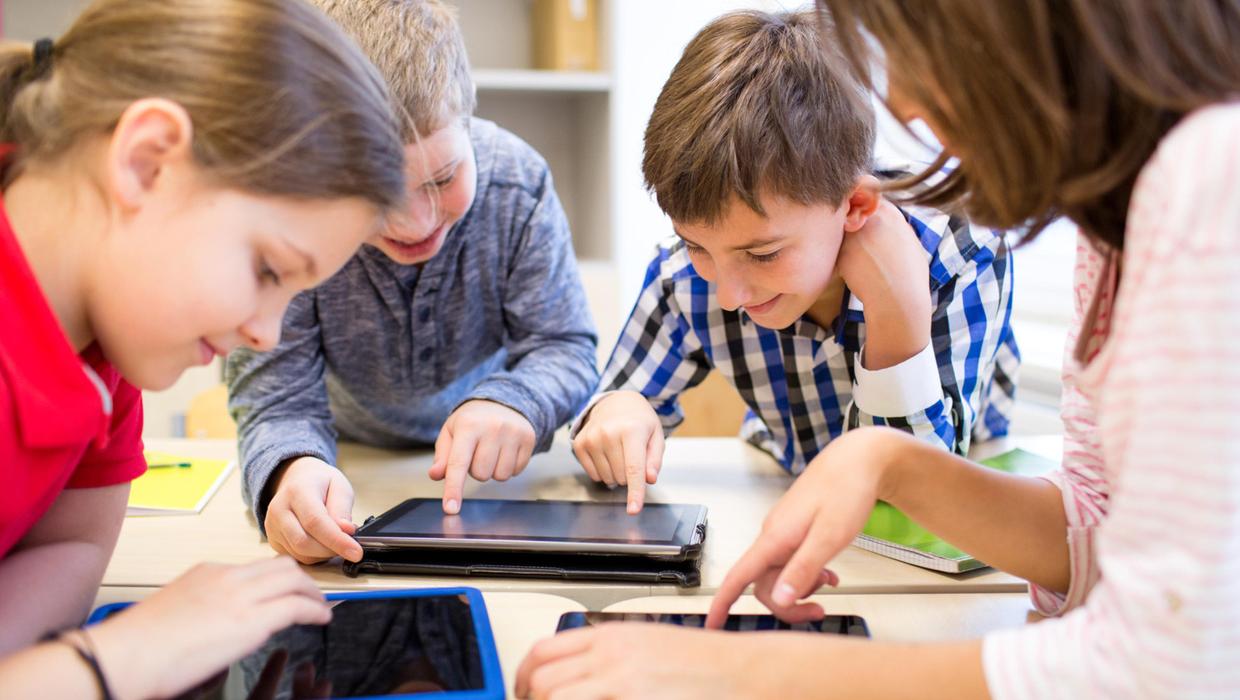
The rise and recent implementation of tech like tablets devices in schools all over the world, has really stirred a global debate of unprecedented proportions when it comes to the benefits or harm of tablets and how that affects the teacher interaction with students.
Will this, ultimately, result in a new and a better way of learning that employs into practice the best of both worlds, the new, technological one that dawns, where man and machine can approach learning difficult science concepts in a fun and engaging way, overcome learning barriers (mostly) of any kind when it comes to education, and the old” traditional method of learning as we know it? Or, is it just a gimmick, merely a stunt, an ace in the sleeve that officials can pull off in the name of implementing “innovative” education methods, “making” changes..a fruit that is still not ripe for the taking?
When talking tablets and their effect on the teacher interaction with students, first, things, first. In order to create an unbiased article, here at tabletish.com, we need to go back to where everything starts, the place where basic habits are being learned, and most rudimentary socialization skills are formed by copying the parents. And that place got to be the home, right?
So, there is some common knowledge when it comes to allowing children before the age of two to use a tablet. Of course, there is no doubt that using a tablet device as a learning tool can greatly impact a child’s learning abilities in a positive way. But, as soon as you take them out for a walk, that tablets should stay home. It can be used at home, in the classroom, as a learning tool or an entertainment device but, children should not fence themselves in and distancing themselves from the real world with compulsive tech device usage. Teaching your children the dangers of crossing a street, they should know never to have a tablet in their hands when outside.
So, when it comes to schools, inevitably we stumble again, on the teacher interaction with students. Some schools have implemented tech, (especially tablet computers) so deep into the curriculum and didactics that they don’t even use books anymore. They use a tablet. Parents sometimes ask how do children underline stuff, how do they keep notes and track of the lesson and how the teacher actually organized his/her work. All of that is accomplished in the most efficient and effortless way because it’s established completely as a learning tool. There are no games on it, it serves a single purpose in those schools. And frankly, that’s the way it should be. Teachers and students get accustomed to the tech, using their tablets proficiently, thus improving the interaction between the students and the teacher.
When it comes to how kids learn the best, there are enough claims by neuropsychologists that ensure us with their utmost authority and credibility that children learn best by touching because there are a number of pathways on a neurological level that act as intermediaries between the concept of knowledge as we know it and what the real object actually is. Through touch and smell you create a base concept of what you are learning. If we take only sensory perception into consideration, then, the tablet is, by all means, an extremely rich learning environment. But when it comes to tactile and olfactory level, it is lacking considerably so you don’t learn the same way.
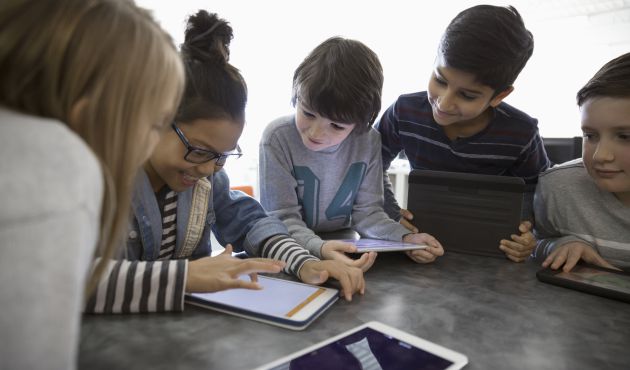
The back part of the brain is purely perceptive. That’s one-third of the brain, dedicated to understanding perception. One-third of that back half of the brain is assigned to visual perception. The other two-thirds are tactile and olfactory perception, and auditory; those centers in the brain allow us to approach understanding things in three different ways. If we remove the whole tactile part we will be missing a very important facilitator to understanding day to day life and reality. While the tablet can facilitate the teacher interaction with students some may argue that they lack depth when it comes to tactile and olfactory perception and learning.
When in the virtual world, through the help of our technological devices like tablets, phones, or laptops, with just the slightest movement of our finger, we can go from one chapter of Pepa Pig to another or count to three in the same way. Doing things in the same way always, can’t get us far in terms of improvement and learning. Children don’t quite learn what a cow is until they go to a stable and see it, witness the size of the cow, smell it, maybe even feel it by touching it, and that creates a mental image, visualized map, blueprint, for the concept of a cow.
Today, tablets and mobile phones can measure angles, distance, and along the way use these devices to search for equations of polygons etc. It introduces a much richer dimension to learning. Mathematics can be closer to real-life thanks to technology and the teacher interaction with students who are, for example, not that good at math, can greatly improve.
How tall is the basket? How big is the field? Stepping on the mud and getting out of the classroom is key. It is the connection with the real world. There are studies that show that you study better with your hands, touching, counting things rather than with the tablet, or learn the basic and advanced concepts of mathematics better when you write by hand than when you are simply using the tablet to fill in data on a screen, which doesn’t benefit the teacher interaction with students.
Or, is that true? Knowing that tablet devices can visualize data, enabling kids to grasp concepts and ideas which might seem unfathomable and impossible to them, if they can’t approach a specific subject from a visual standpoint. Not everyone is a tactile person or prefers learning through audio. Actually, tech can enable you to learn through audiobooks and specific audio material/curriculum even better if you are just the type who prefers learning by listening. Canceling out all the noise and listening to a lesson carefully, in a comfortable and peaceful surroundings sounds pretty great.
Some state that the writing on a tablet is practically non-existent. Of course you can use a pen but if you don’t have one, it comes down to “writing” all letters in the same way – simply touching the letter symbols on your screen. So A is not different at all from B or C. Capital or small case. Instead, when you write on paper, the writing process is a whole lot different and you learn more.
When you do the math on the tablet there is no such thing as going blank. It is the catalyst that allows the change of methodology.
Before the technology was very expensive, now it has dropped a lot in price, and students already know how to use most of the devices. Of course, here comes the contra argument of using a pen for your tablet. Equipping students and teachers with not just tablets but tablet pens also to deepen the experience and bring it as close as possible to “the real thing”. From an environmental perspective, it’s more eco friendly because you don’t use paper, and a tablet can last a long time.
Technology can become an effective tool against school dropout. The students with the worst results are the ones who are most favored by the use of the tablet. The good ones sometimes improve and sometimes don’t but the “bad” students really shine here.
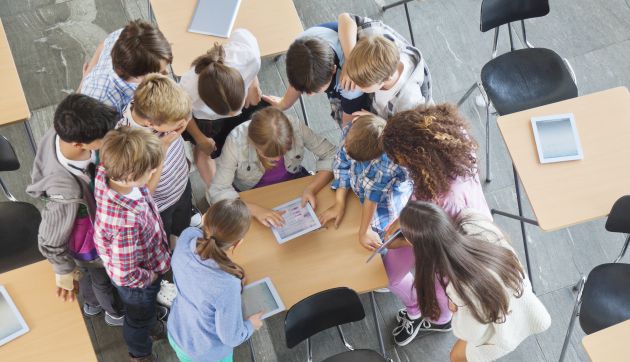
Kids work at the end of each project that can have very different formats. They present it to the rest of their comrades. Speaking in public is the norm and helps to master the form of expression. Others opt for visual language and make videos to explain everything they’ve known.
The fundamental logical aspect of how this is going to work is if teachers have the right training. For every dollar spent in technological innovation and implementation into the educational process, the same must be done for preparing and educating teachers to obtain basic and advance tech-literacy and proficiency.
When addressing the teacher interaction with students, the key is to combine tablets in the classrooms to methodological changes and group and cooperative work. Neither the traditional learning is the best nor going completely new and forsaking traditional methods. The school system can and will adapt very well between these two worlds if you give it time.
The ever-present problem with tablets being used in schools as a utility tool to improve on the interaction between the teacher and the students and the learning methods is not in the idea of using the tablet as a learning tool but being used over a prolonged period of time during the day only for entertainment like video games and movies, which serves no educational purpose. And children being children, the possibility of that is quite real.
So, if a child reads Shakespeare in a book or tablet, we find that quite positive and praiseworthy. Now, things change if they use it only to watch videos or play video games. That is something that parents can’t get over. The solution here is to introduce technology into the family in a sensible and appropriate way.
Personalized education, motivation, fun, and empowering group work, improved teacher interaction with students are some of the most accredited advantages, according to experts. But on the other side of the coin there is the argument of students being distracted very easily or having the need to update or even create a whole new pedagogical system from scratch.
If we continue to apply the same method, if all we do is change the traditional slate to the tablet or the paper to the tablet, we are at the same point and the introduction of new technologies to the classrooms does not bring anything new. The person responsible for the entity stresses that in this case, the introduction of new technologies can become counterproductive because it implies a visual fatigue for the student and facilitates their distraction.
New technologies must serve to transform didactics and to personalize education, because not all students go at the same pace and until now we have had a homogeneous and standard education, which can now change, to learn to contrast and seek information or to enhance group work. To get a performance from new technologies in schools, the didactic change and updating of the professions is essential, because this climate in the classroom of more autonomy also requires a different programming.
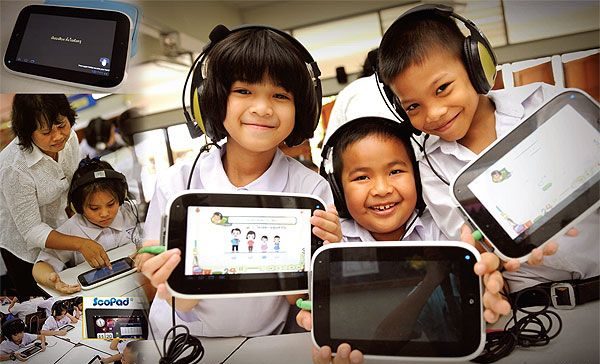
Some more progressive pedagogists the use of tablets serves to strengthen knowledge, to enhance the creative capacity of the student or to experiment but can’t stress enough he digital literacy of teachers, who must understand the new learning process if we want to really bridge the gap between teacher interaction with students. Teachers need to do a thorough review of how they work and adapt that workflow, translate it to this new medium, which is the tablet.
One of the main ideas behind introducing tablets in classrooms is not the importance of new technologies just for the sake of technology but the tablet as a tool to personalize knowledge, to make classes more dynamic, less boring and “out of the preset script”. The head of the White University recalls that children who study primary are “digital natives” and consider that they are “not afraid of new technologies”, as may happen to other generations. But he warns that the school should guide them to healthy use, “because many students do not know how to make proper use in a school environment.
Creating video-conference groups to practice languages with students from other countries, creating a blog in which students become journalists, and write their news developing their written expression skills and creativity, are two of the examples that experts put on the potential benefits of new technologies.
For example. a study shows that students who write on social media with abbreviations or signs have been shown to be able to write correctly and normatively. What we really need to study here is whether the use of new technologies means a detriment to students’ calligraphy and motoric skills with a pen.
The introduction of tablets is a methodological change. Every student goes at their own pace, no one is left behind. This method surpasses the idea of the teacher who made the class the same for everyone and that everyone had to learn the same way. The teachers need to star working on updating their teaching.
The school has also introduced tablets to the classrooms of Early Childhood Education, starting with P3, where they coexist with other more traditional teaching systems. Despite the positive assessment of the center’s leaders, some studies — such as that developed by Boston University’s medical school — suggest that frequent use of these devices by children between one and three years old can affect their brain and their “social and emotional” developmental abilities. In this case, the study considers the ability of children to self-control the use of tablets after having used them as an element of distraction or play. The same study points out that the intuitive operation of smartphones and tablets, with touch screens on which elements are dragged with their finger, can make it difficult to understand concepts that require deduction and logic, such as mathematics and other sciences.
Technology has been sneaking into classrooms for years and we can’t stop its foray living the way we live in the digital age.
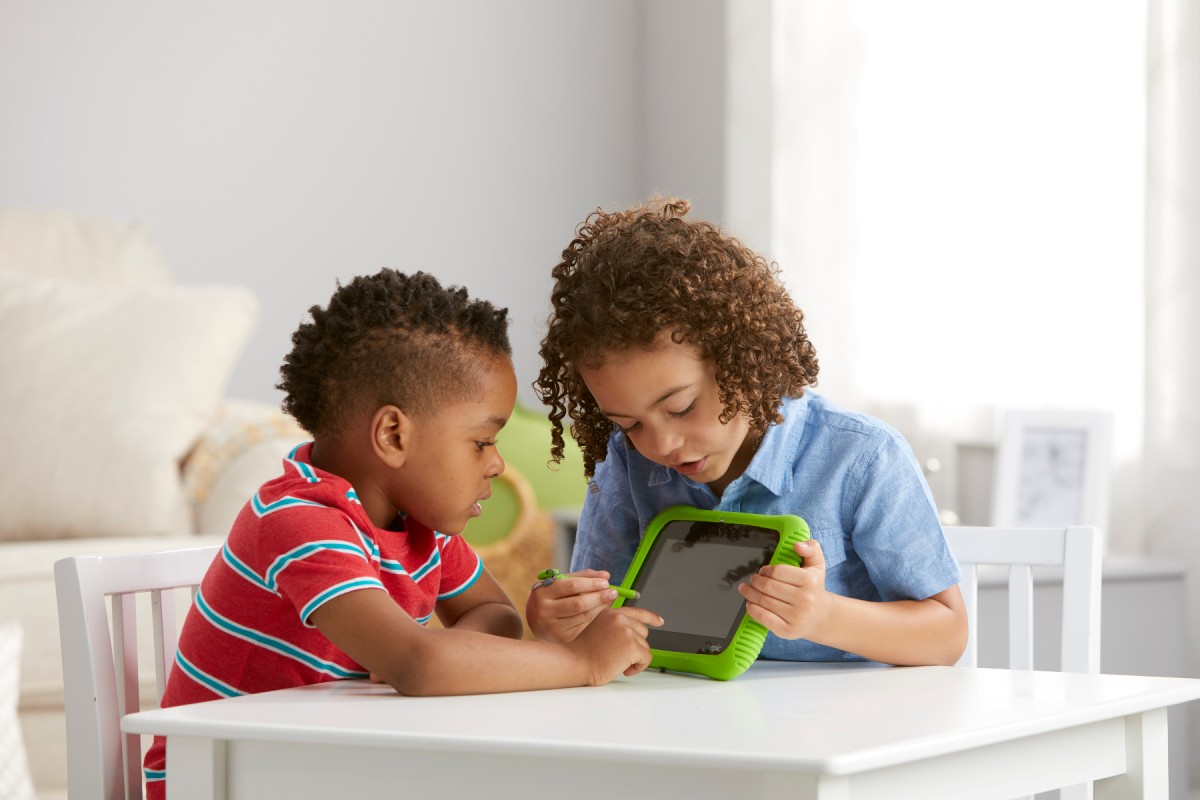
Little or nothing have to do with the classes of this return to school, with which we live. Traditional whiteboard has been replaced by digital and textbooks make way for tablets.
These devices are favorites of the little ones to learn, even younger children are true experts in their use. But are they really that useful? Candy H. Albarrán, counselor of the group Brains International Schools explains that they are a great educational help, but not in all ages.
In preschool, while the child interacts with their teacher, they must interact with their environment too.
For younger children, the use of technology should be more limited: from home and at school you have to control the times of use, because the most important thing during the first years of life is sensory development through experimentation with the environment.
What’s more, younger children should not only relate to machines. First of all, in the early stages of childhood, children must learn the rules of social relationships such as respect or values such as empathy, and we must not forget the importance of learning through play.
School counselors advise on the idea to start using tablets in the classroom from the age of three in the interval of once or twice a week, because Tablets are good for reinforcing touch learning, pre-writing, to get acquainted with technology… But we cannot neglect the need to interact with the environment.
And its use must be very well supervised, explains the guiding guide of Brains The Internet has opened a new era of access to information, but sometimes children have access to much more than they understand or understand well. At that age, they do not know how to easily discern which information is true or false. Therefore, in the case of the little ones, the search process must be under the supervision of an adult.
It can start to be used as one more educational tool, but not the only one. It is good to always have them at hand as they are very useful to carry out a project, to search for information or to contrast it… Its use must be supervised. We cannot deny that technology is positive for children’s educational development, but in the case of early childhood it is much more important for children to develop other, more important competencies such as values or their emotions.
Backpacks are lightened and exercises become more interactive, but they also require double supervision and control of their use: at home (with parental control) and at school (with a secure platform, with restricted access).
This well-used control of technology is even more necessary in secondary, when the Internet is an already essential tool of work but it must be achieved that it is only used for educational purposes, and not as leisure.

The little ones still need their school garden, a good library, easels to paint, musical instruments, language and science laboratory, space to practice sports… without it, teaching becomes impoverished and while striving to improve the teacher interaction with students, we can actually do more harm if we focus too much on tablets.
The ultimate conclusion in one sentence:
The use of tablets in school brings many benefits and can definitely take the whole teacher interaction with students to another level, as long as they are used sparingly, with supervision, appropriately and accordingly children’s age, without sidetracking or putting aside the traditional teaching methods.
But, what do you think? Is learning based on cooperative work and improved interaction between the teacher and the students with the help of technological tools the answer to current challenges? What will schools, society, and even jobs look like in 20 years?